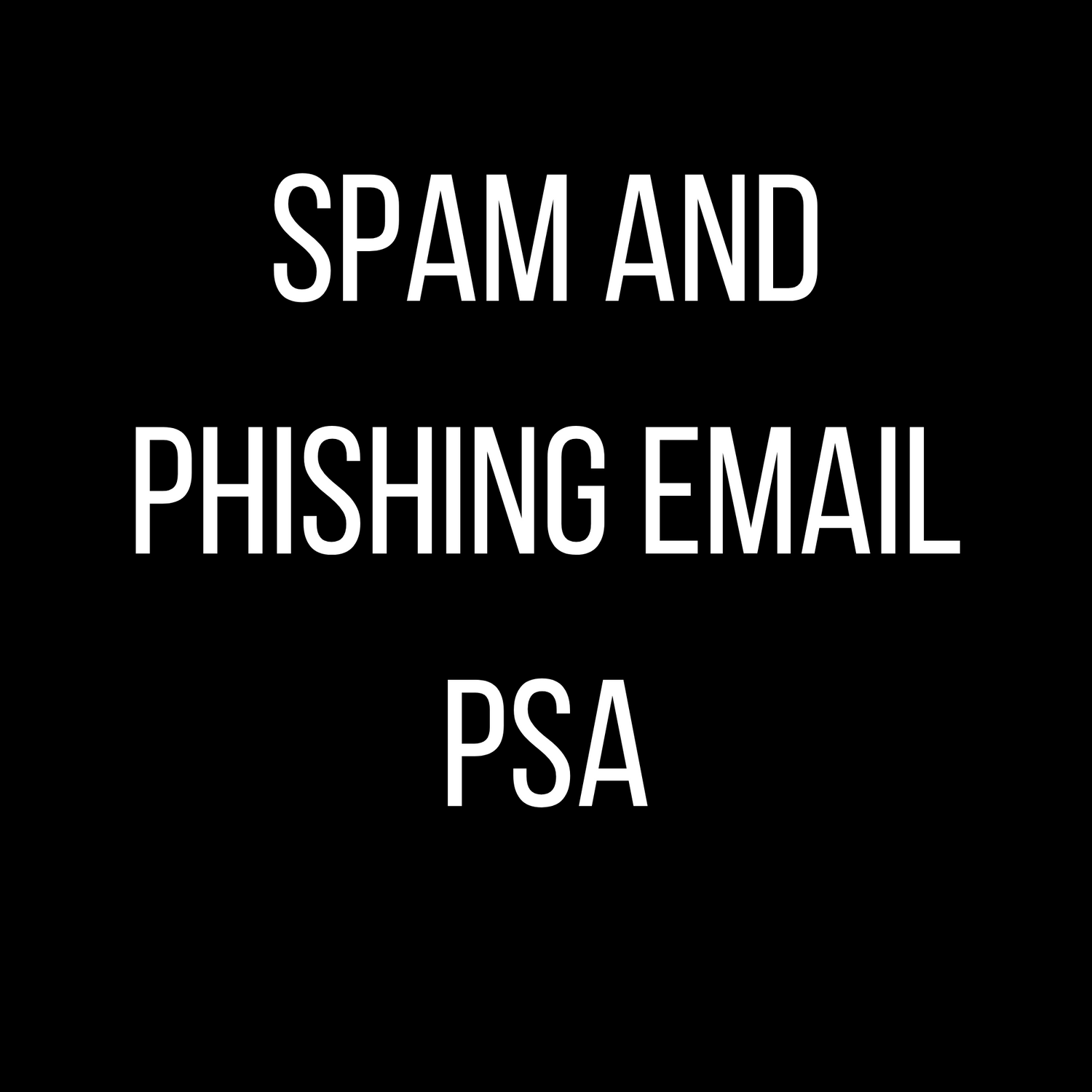With the holiday season upon us, we thought we would take a moment to review some information to help keep you safe on the web and highlight some common signs an email has characteristics of a scam. Shopping safely here at www.statements2000.com is a given, but we want to help support you and raise awareness when it comes to suspicious emails. One of our lovely collectors received an email like this:

The scammers are pretending to represent PayPal. Here are some helpful hints that indicate this email is a scam, and the email is not really from PayPal:
- The email address itself is from a personal email address (a Gmail address) which would not be used if you were receiving legitimate correspondence from a major corporation such as PayPal. Most messages would come from a generic @paypal account, and not an individual employee's personal name. Even if coming from an individual within the PayPal organization, the email address would end in an @paypal.com email address.
- The email is signed by "team PayPal" which is not how PayPal closes an email.
- The PayPal logo is nowhere to be seen.
- The accent color in the email is green, which is not the corporate color of PayPal.
- There are hints that this is not quite right with regards to punctuation, such as the arbitrary uses of !! in the subject line and body of the message.
- The fonts do not match, giving the email an unprofessional look that would not match the caliber of a company like PayPal.
- The inconsistent font, missing logos, odd punctuation for a professional email and other small hints all combine so that the look and feel of the email is "off". Often, spelling mistakes can also be found in scam emails.
- The "from" name is a random individual's name (Greta Dahl) and it does not match the email address whatsoever which is oliversalvi19@gmail.com.This is not to say the names and email addresses must always correspond, but two conflicting names is something to take note of when assessing the validity of the email overall.
- In this instance, we do not accept PayPal as a form of payment, so referencing one of our handmade art pieces and PayPal in the same email does not make sense.
Other red flags:
- In this case, the address included did not match the recipient's correct physical address. That is a very obvious red flag.
- The order number does not correspond to a real order for our art piece.
- We do not accept PayPal as a form of payment, so it would make no sense to receive a PayPal related message about one of our art pieces.
- In this instance, the art had long since been received, so it would make no sense to owe money at a later day post-delivery.
This is a very low-quality scam email for a number of reasons as outlined, but unfortunately, people still get fooled. Some emails are much trickier than this example, and look much better in terms of quality. Be sure to always do your diligence when reviewing emails that prompt you to take an action like pay additional funds, change your password, or provide personal information via link if it is not something you solicited or expected.
WHAT TO DO IF YOU RECEIVE A SUSPICIOUS EMAIL
If you have questions about an email you received, stop and do some research. Do NOT rush into providing your personal information, or making a payment of any kind over the phone or via provided link. Many scams are intended to confuse, worry, or pressure you. The best thing you can do is stop, think about what is being asked of you, and take a moment to determine the validity of what you have received if in doubt whatsoever.
Contact a company directly if you have any questions about an email you receive. In this instance, since the scammer is saying they are "PayPal team" research the phone number to PayPal and call them directly using the phone number you found independently. Don't trust the phone number in the email, it is imperative you find it for yourself. If you use the phone number from the email in question, you may be reaching out to the scammers directly.
If the subject matter or content of the email has you confident this is a malicious email, you can simply delete the message.
You can also report spam, junk, and phishing emails through many email providers, and block senders so you do not receive additional messages from a specific email account you elect to block.
We know this is common sense for many of you savvy shoppers, but many people shop online who wouldn't otherwise during the holiday season and they are extra vulnerable targets. If this is all new to you and you are overwhelmed, we urge you to do some research and make sure to learn some more signs of scam and phishing emails to empower yourself.
HELPFUL RESOURCES:
Consumers and small businesses like us can also report these scams to the FTC (Federal Trade Commission) but there are new iterations on a daily basis, and the originate worldwide. There is simply no substitute for educating yourself and trusting your instinct when something just doesn't look or feel authentic.
Here is more information from the FTC on how to avoid a scam
Here is a phishing quiz presented by Google to help make you aware of phishing techniques
For additional clarity on this specific example, the email our collector received was not an issue specific to us as a company. In this example, the scammers are not even posing as us, they are posing as PayPal. They are not even using a "spoof" email address to make the email look as though it came from our company, or PayPal's. In some cases, scammers will change the name of who the email is "from" to mimic or closely match the company, person, or other entity they are imitating or purporting to be.
In the example we shared, unfortunately, we are just one of the details or variables the scammers used based on someone's real purchase activity to try to fool them. The variables they chose could have just as easily been, say, Visa instead of PayPal and Williams Sonoma instead of Statements2000. Scammers have a number of techniques and ways to access data that seems familiar to lend them credibility, or confuse you.
We personally dialed the phone number provided in the email above, and we were connected to a call center in India.
Be vigilant and educate yourself on how to not fall victim to the many internet scams.





Leave a comment
All comments are moderated before being published.
This site is protected by hCaptcha and the hCaptcha Privacy Policy and Terms of Service apply.